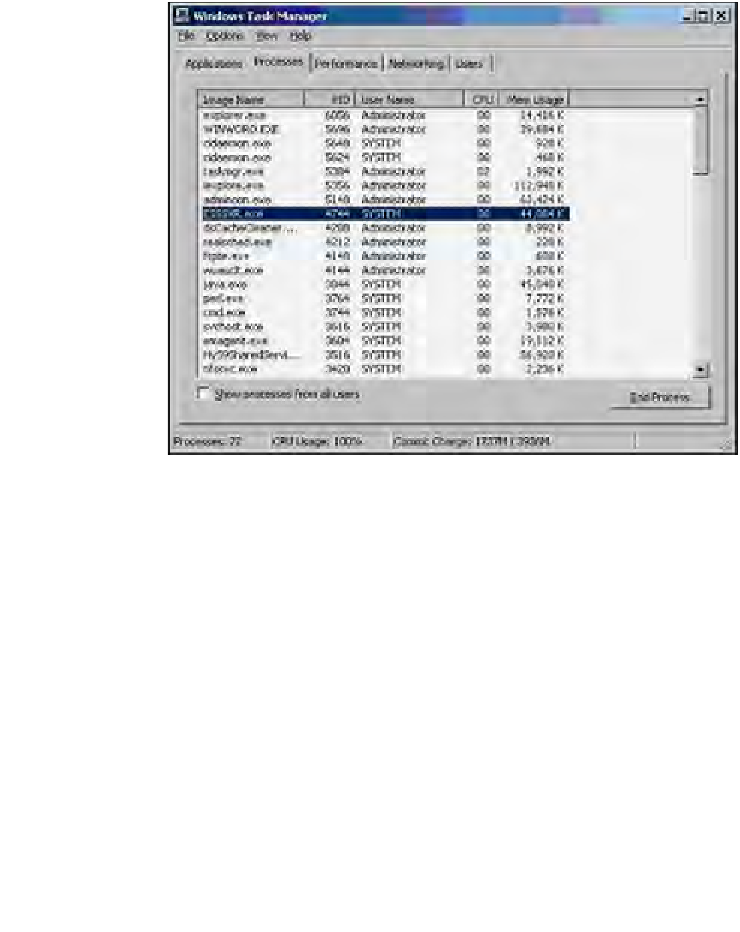Databases Reference
In-Depth Information
It should be noted that occasionally, when there is a disruption to an Essbase process
(like an external database failure or a file server down), and the process has passed
the point of no return (Essbase term), the instance of ESSSVR that was running the
interrupted load process may place it into terminating mode. In spite of this, the
process never really gets terminated.
To terminate this process, you either need to reboot the Essbase server causing
interruption to the all other applications that reside on the server, or by using
the above process ID, you can kill only the offending ESSSVR process on the
Essbase server.
The following screenshot shows how to terminate the process in a Windows
server environment. Highlight the process and click on the
End Process
button.
Unicode and Non-Unicode applications
Before we go further, let us explore the definition of Unicode. What is Unicode?
According to
http://unicode.org/
, Unicode provides a unique number for
every character, irrespective of the platform, the program, and the language used.
Essbase supports Unicode encoding. When you create an application, you define
it as either a Unicode or Non-Unicode application. If you are dealing with customers
across the globe and want to support different languages, then you would choose
the Unicode setting for your application. The Unicode setting in Oracle Essbase
uses the accepted standard UTF-8 character encoding.


